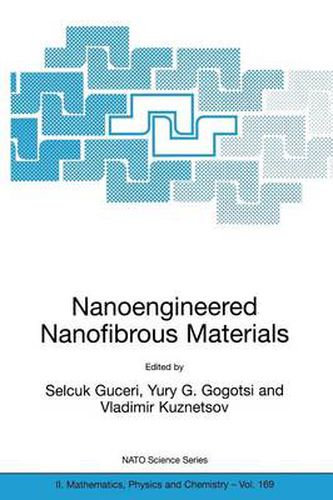Readings Newsletter
Become a Readings Member to make your shopping experience even easier.
Sign in or sign up for free!
You’re not far away from qualifying for FREE standard shipping within Australia
You’ve qualified for FREE standard shipping within Australia
The cart is loading…






This title is printed to order. This book may have been self-published. If so, we cannot guarantee the quality of the content. In the main most books will have gone through the editing process however some may not. We therefore suggest that you be aware of this before ordering this book. If in doubt check either the author or publisher’s details as we are unable to accept any returns unless they are faulty. Please contact us if you have any questions.
The combination of conductive polymer technology with the ability to produce nanofibres will facilitate major new developments in biotechnology and information technology, benefiting such areas as scaffolds for tissue engineering and drug delivery systems; wires, capacitors, transistors and diodes; sensor technology; biohazard protection; and energy transport, conversion and storage.
The work on nanofibrous materials presented here is designed, first of all, to instruct scientists in the most advanced methods for the formation of nanofibres and nanotubes. The second section covers the physics and chemistry of nanofibres, while the third deals with computer simulation and modelling. The applications described in section 4 include biomedical applications, nanotube-based devices, electronic applications of nanotubes and nanofibres, nanofluidics, and composites. Finally, the fifth section discusses recent developments in nanomaterials, nanoparticles and nanostructures.
$9.00 standard shipping within Australia
FREE standard shipping within Australia for orders over $100.00
Express & International shipping calculated at checkout
This title is printed to order. This book may have been self-published. If so, we cannot guarantee the quality of the content. In the main most books will have gone through the editing process however some may not. We therefore suggest that you be aware of this before ordering this book. If in doubt check either the author or publisher’s details as we are unable to accept any returns unless they are faulty. Please contact us if you have any questions.
The combination of conductive polymer technology with the ability to produce nanofibres will facilitate major new developments in biotechnology and information technology, benefiting such areas as scaffolds for tissue engineering and drug delivery systems; wires, capacitors, transistors and diodes; sensor technology; biohazard protection; and energy transport, conversion and storage.
The work on nanofibrous materials presented here is designed, first of all, to instruct scientists in the most advanced methods for the formation of nanofibres and nanotubes. The second section covers the physics and chemistry of nanofibres, while the third deals with computer simulation and modelling. The applications described in section 4 include biomedical applications, nanotube-based devices, electronic applications of nanotubes and nanofibres, nanofluidics, and composites. Finally, the fifth section discusses recent developments in nanomaterials, nanoparticles and nanostructures.